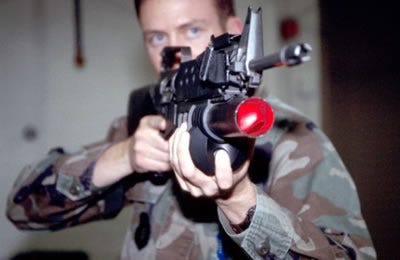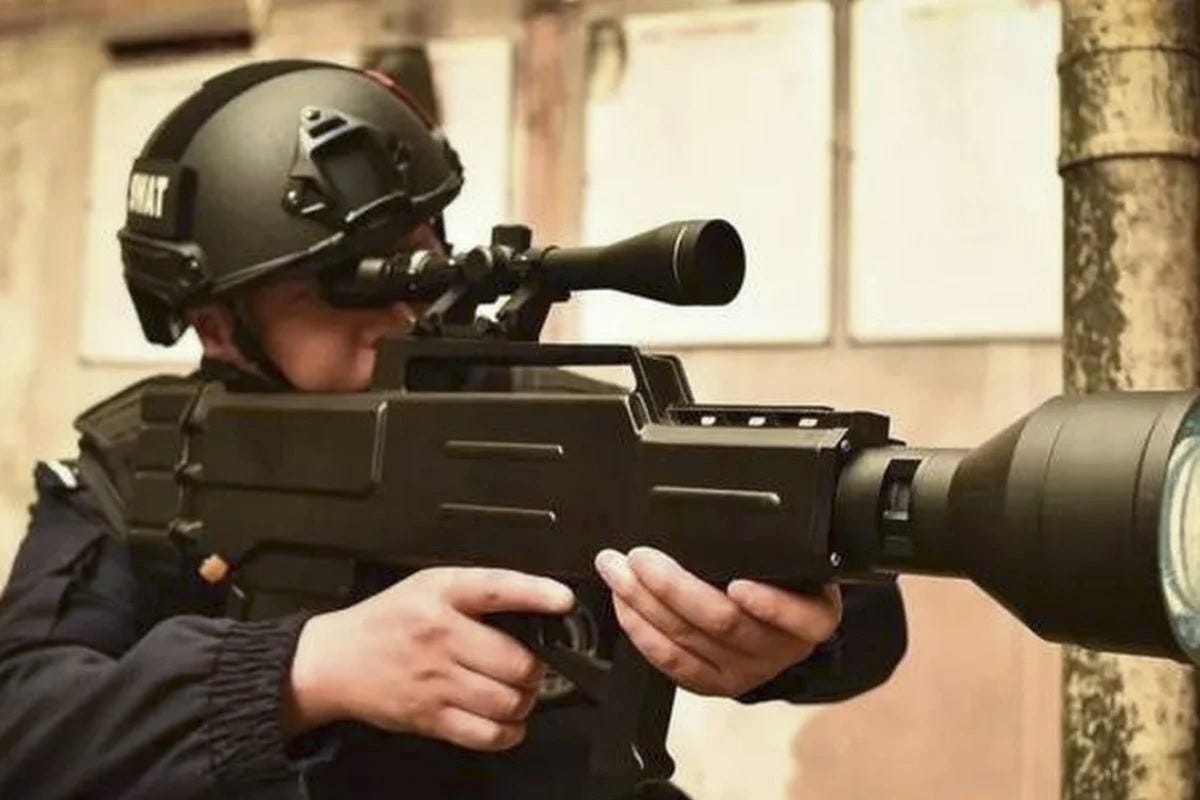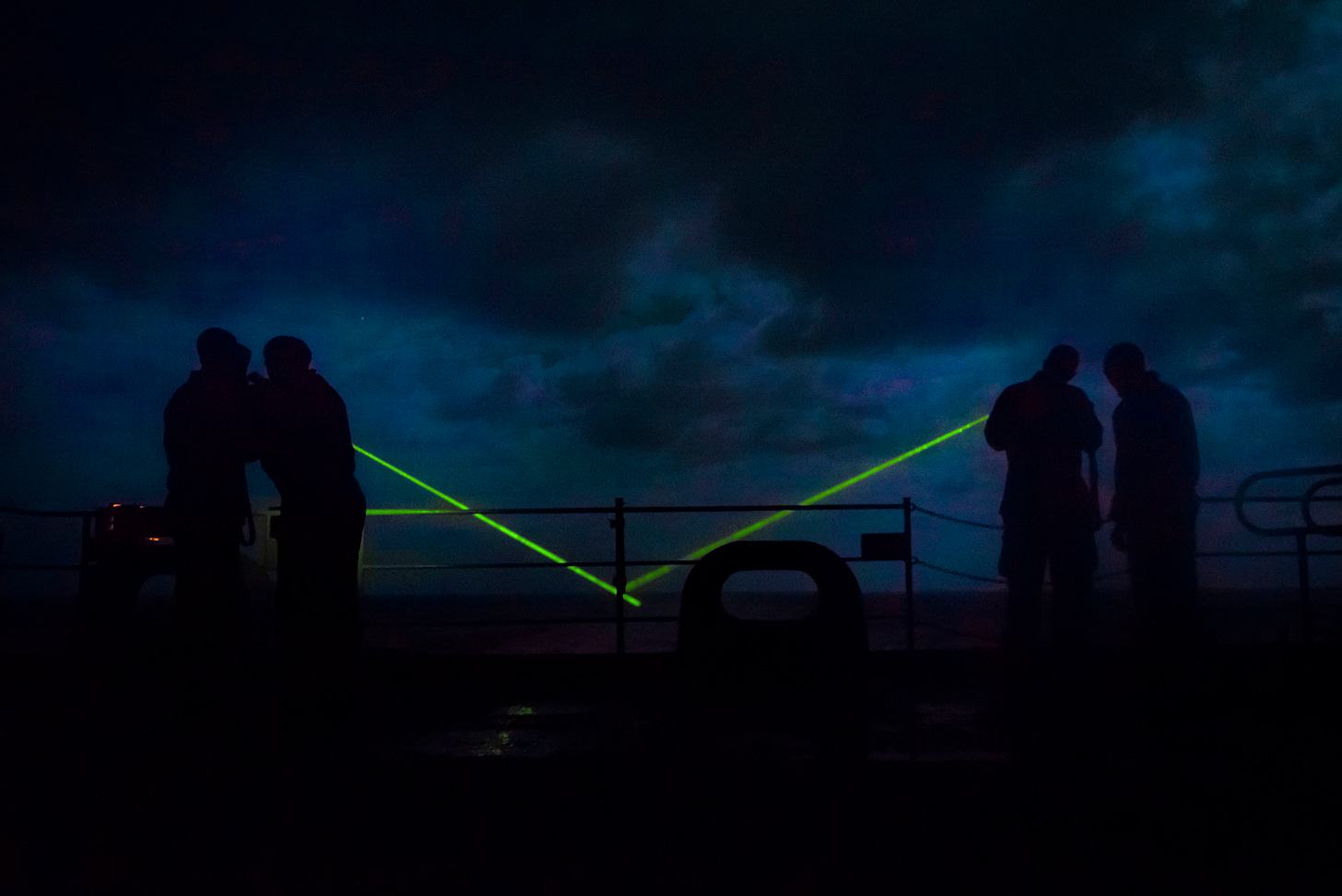
The year is 2032. Hardened criminal Simon Phoenix has awakened from suspended animation and escaped his imprisonment, fleeing into the streets of the megalopolis of San Angeles. Disgusted with the futuristic utopia’s embrace of pacifism and desperate for firearms to kickstart his life of crime, Phoenix raids a museum and liberates several “historical weapons” before pondering the same question that anyone suddenly thrust into the future might ask: “Where are all the phaser guns?”
Demolition Man premiered in 1993, and the boxy “Magnetic Accelerator” 1X.31A particle weapon that Phoenix (played by Wesley Snipes) eventually uses to terrorize San Angeles is, of course, just a prop, albeit one based on the unusual-looking Heckler & Koch G11 that the US Army once eyed to replace the M16. But Phoenix’s question remains a pertinent one: with militaries around the world racing to develop high-energy laser weapons, how long will it be until soldiers find themselves outfitted with their very own BlasTech Industries DL-44 blaster, like Han Solo? Or standard-issue phaser rifle, like so many Starfleet personnel?
The reality is that handheld laser weapons have existed for years – just not in the way you probably imagined. Below, a survey of handheld laser weapons past.
Soviet Laser Pistol
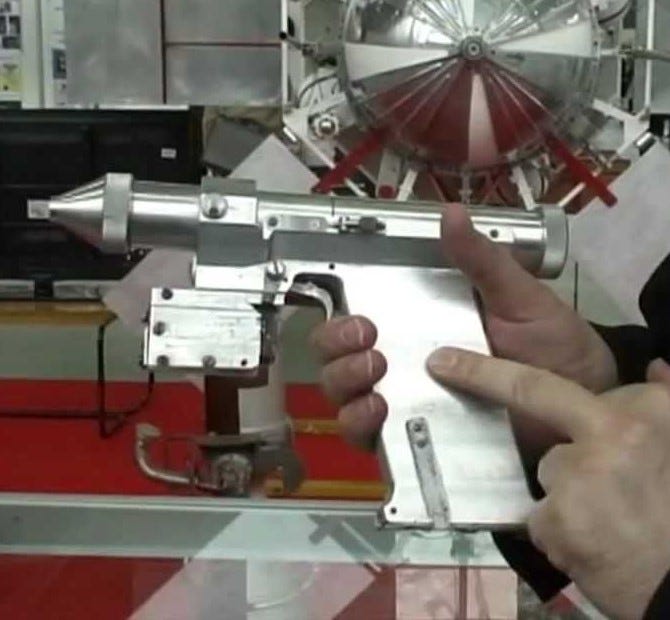
Officially known as the Laser Gun with Pyrotechnic Flash Lamp, the Soviet Union secretly developed a handheld laser weapon in the late 1970s to equip cosmonauts on space missions. According to a detailed examination by Russian journalist Anatoly Zak in Popular Mechanics, the Soviet laser pistol was intended as an anti-satellite system rather than an anti-personnel weapon, designed for cosmonauts aboard the Soviet military space station Almaz to blind sensors and other optics aboard adversary spacecraft.
Here’s how it worked, according to Popular Mechanics:
"Soviet engineers designed a lamp filled with oxygen and containing metallic foil or powder. Instead of magnesium, which was traditionally used in strobe lights, the laser would be “fueled” by zirconium, which produced three times more light energy. Some metallic salt additives were used to match the wavelength of the flash with the range of the laser system. An yttrium aluminum garnet crystal initially served as a “medium” where the infrared laser beam would be generated after each flash.
When ignited by an electric spark from a tungsten-rhenium string in the oxygen filled atmosphere, the lamp would shine for just 5 or 10 milliseconds, producing a remarkable temperature of around 5,000 K. The weapon was reported to retain its blinding force up to a range of 20 meters (65 feet).”
While the laser pistol reportedly saw successful testing in the 1980s, it never entered operational use, as US-Soviet tensions surrounding the militarization of space subsided with the end of the Cold War. Today, the a surviving copy of the Soviet laser pistol is in possession of the Peter the Great Military Academy of the Strategic Missile Forces, which showed off the unique weapon at the Innovations and Inventions Expo in Moscow way back in 2011:
Saber 203 Grenade Shell Laser Intruder Countermeasure System
The Saber 203 Grenade Shell Laser Intruder Countermeasure System, more commonly known as the Saber 203, was a laser system developed by the US military in the early 1990s, primarily intended for Marine Corps use. Technically classified as a “dazzler,” its main function was to emit intense light to temporarily disrupt or impair the vision of enemy personnel or the functionality of optical devices, not unlike the Soviet laser pistol. The system itself consisted of a red laser diode mounted in a plastic capsule shaped like a standard 40mm grenade, designed to fit snugly into the M203 underbarrel grenade launcher for the M16 and M4 carbine.
The Saber 203 missed out on a chance at combat, but just barely. While the US Marine Corps deployed the system in January 1995 during Operation United Shield in Somalia, Defense Department officials halted its experimental use at the last minute due to "humane reasons," as the New York Times reported at the time. A Human Rights Watch report later that year would reveal that the Saber 203 was just one of 10 secretive tactical laser weapon programs in development by the Pentagon at the time.
ZM-87 Portable Laser Disturber
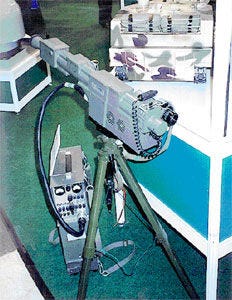
Manufactured by Chinese state-owned defense giant Norinco, the ZM-87 Portable Laser Disturber was first unveiled at the International Defense Exhibitions in the Philippines and the United Arab Emirates in 1995. A crew-served, tripod-mounted laser weapon, the ZM-87 was developed "to injure or dizzy" eyes and to damage sensitive optical sensors, as a contemporaneous report from Human Rights Watch put it. It was the first known tactical laser fielded specifically for use against human targets, according to Beyond Shock and Awe: Warfare in the 21st Century.
Here’s how it worked, according to the Human Rights Watch report:
“Norinco's specifications sheet for the ZM-87 states that the effective distance of direct human eye injury is two to three kilometers, and the effective distance of human eye injury by adding a magnifying sighting telescope seven times normal strength is less than five kilometers. Norinco states that the effective distance for so-called flaring blindness, or flash blinding, is ten kilometers. The ZM-87 can simultaneously transmit fifteen megawatt laser pulses at two different wavelengths. More than 10,000 pulses can be generated from each battery and it can fire continuously for five minutes at ordinary temperatures. The weight of the ZM-87 is nearly seventy-three pounds, including its tripod.”
Shortly after the system’s debut, the United Nations Convention on Certain Conventional Weapons, Protocol IV (also known as the UN Protocol on Blinding Laser Weapons) banned the use of blinding lasers in warfare. Despite this, a ZM-87 was suspected to have been the device behind the so-called Strait of Juan de Fuca laser incident of 1997, during which a Canadian military CH-124 helicopter was allegedly illuminated by a laser while surveilling a suspected Russian spy vessel in the Strait of Juan de Fuca between the United States and Canada, resulting in ocular injuries to the Canadian pilot and his US Navy passenger. In addition, North Korean military personnel allegedly used a ZM-87 in 2003 to illuminate a pair of U.S. Army Apache helicopters flying along the Korean Demilitarized Zone, as CNN reported in 2010.
Personnel Halting and Stimulation Response Rifle (PHaSR)
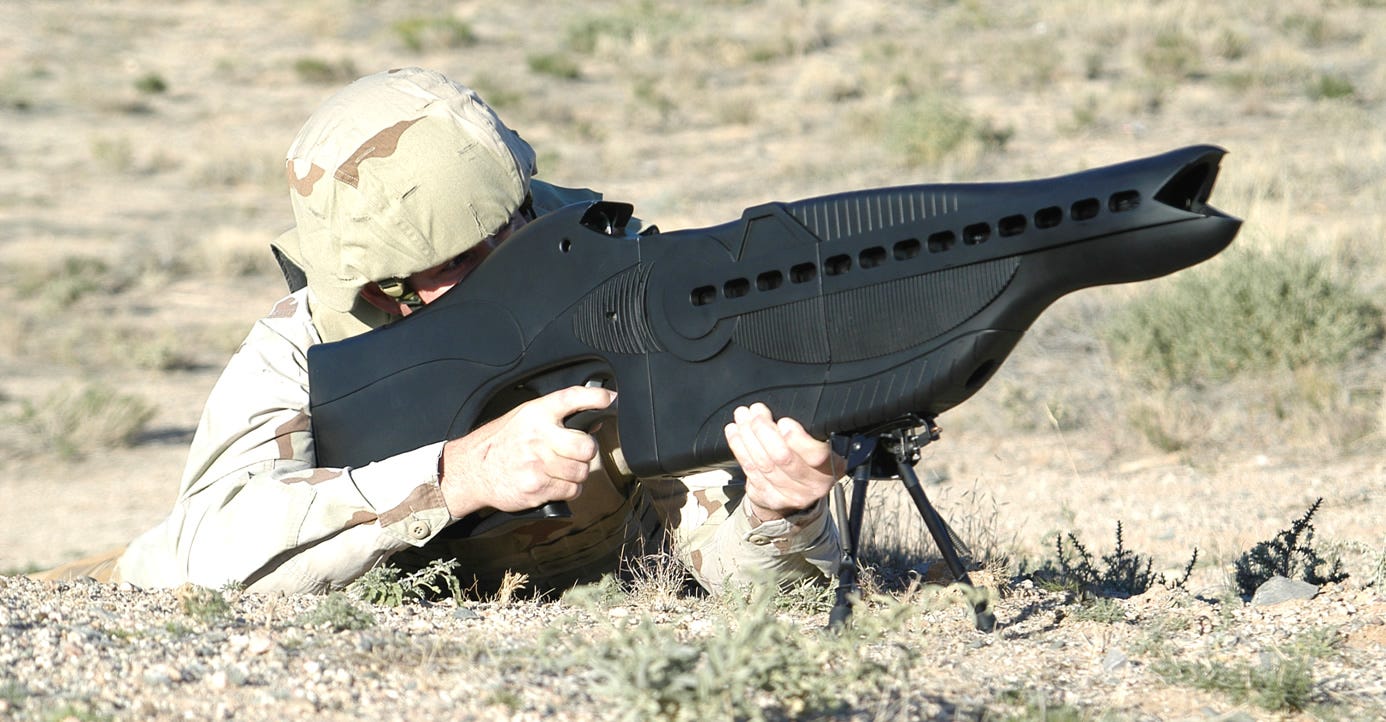
Developed in 2005 by the US Air Force Research Laboratory’s Directed Energy Directorate at Kirtland Air Force Base in New Mexico, the Personnel Halting and Stimulation Response (PHaSR) was, like the Soviet laser pistol and Saber 203, intended to "dazzle" targets, employing two non-lethal laser wavelengths to temporarily blind enemies without causing permanent harm.
With a relatively low intensity intended to produce only a temporary blinding effect, the PHaSR was technically not prohibited under the 1995 UN Protocol on Blinding Laser Weapon, which the United States acceded to in January 2009. Regardless, the system faced challenges in practical deployment and was eventually abandoned by the Defense Department.
ZKZM-500
Unveiled by Chinese scientists from the Xian Institute of Optics and Precision Mechanics in 2018 and billed as a “laser AK-47” by the South China Morning Post, the ZKZM-500 is a laser rifle that could purportedly zap targets at up to 1 kilometer away.
Like the Soviet laser pistol and PHaSR, the ZKZM-500 was purportedly developed as a non-lethal system for crowd control, similar to laser dazzlers like the PY132A, WGJ-2002, and BBQ-905 systems that have been in use by Chinese military and law enforcement personnel for years. But the scientists told the SCMP that the ZKZM-500 could actually burn through clothes and induce “‘instant carbonization’ of human skin and tissues,” making it the first true handheld anti-personnel directed energy weapon known to exist in military arsenals.
Here’s how it works, according to Popular Science:
“Weighing at 6 pounds (about the weight of a typical assault rifle), the ZKZM-500 has a range of 2,600 feet. The ZKZM-500 uses a lithium battery with enough power for 1000 two second shots (keep in mind, those 1000 shots may not be at full power). According to Institute designers, its laser is powerful enough to instantly scar human skin and tissue. It can also ignite clothing, knock a small drone out of the sky, or even ignite a fuel tank. That would place its power output around 100-500 watts (most surgical lasers top out at 100 watts).”
Despite the hype surrounding its initial debut, the ZKZM-500 has all but disappeared from public view since, suggesting the system is simply an example of high-tech vaporware – a useful piece of propaganda and little else.
B.E. Meyers Glare LA-9/P
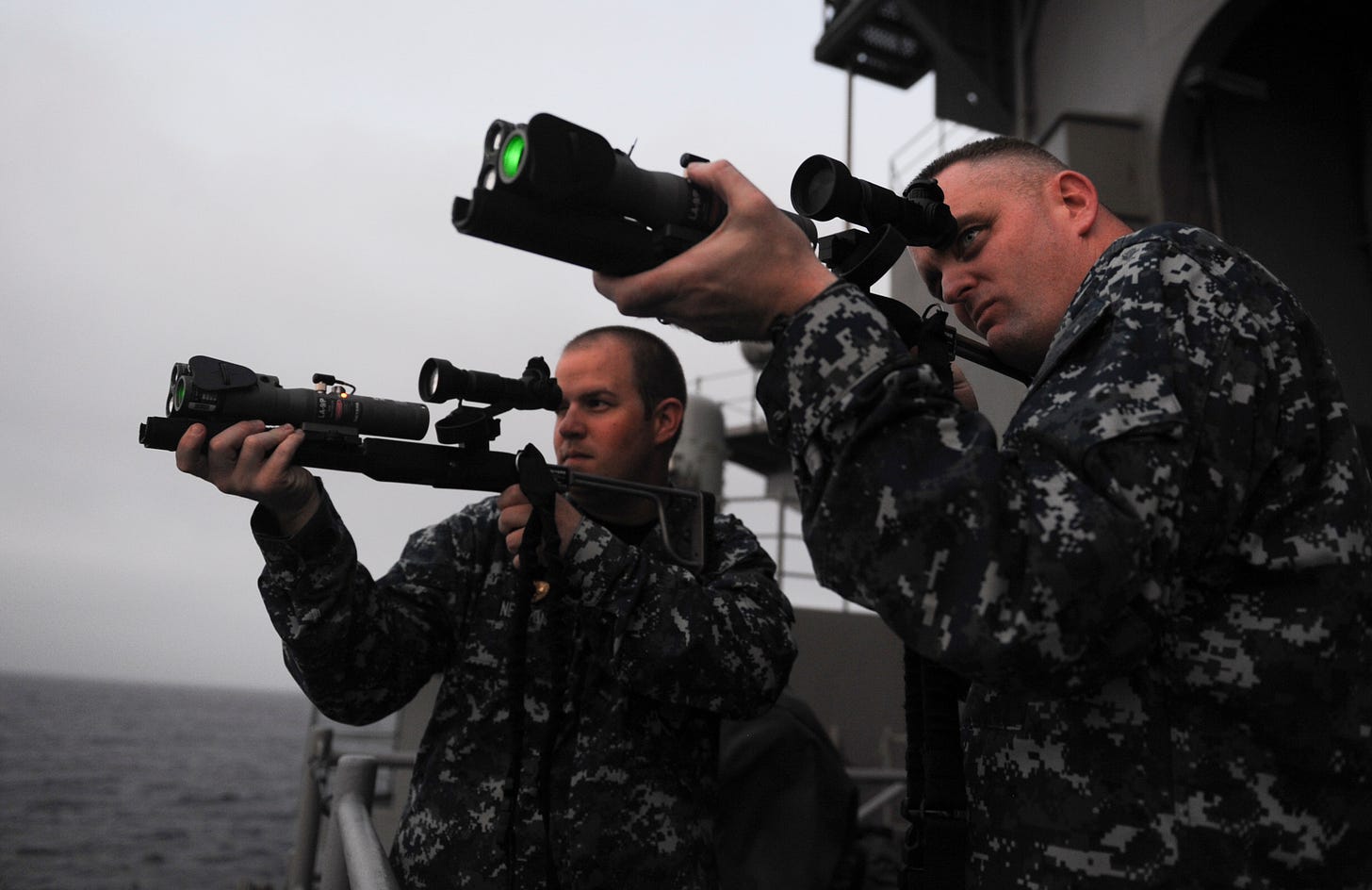
The US military’s B.E. Meyers Glare LA-9/P is, like the Soviet laser pistol, Saber 203, and PHaSR, a “non-lethal optical distracter” designed to dazzle or disorient enemy sensors and inflict “reversible optical effects” on human targets, according to the Defense Department. In service for more than a decade, the LA-9/P is the only known tried-and-true handheld laser dazzler currently available to US troops. Indeed, as recently as December 2022, Americans sailors assigned to the Arleigh Burke-class destroyer USS The Sullivans used an LA-9/P to cause “temporary disorientation” in the crew operating a Islamic Revolutionary Guard Corps Navy patrol boat that harassed a group of US Navy vessels transiting the Strait of Hormuz, as I reported for Task & Purpose at the time.
Laser guns do exist, but primarily as optical dazzlers used for temporarily blinding enemy troops and their high-tech sensors, not disintegrating them into ash on the spot. There are obvious reasons for this: laser weapons require a tremendous amount of energy to generate a beam powerful enough to cause significant damage, and compact, portable power sources do not appear technologically feasible at this point in time; similarly, the components required for high-power lasers (diodes, lenses, cooling systems, etc.) are still too bulky for a handheld form factor.
Until that technology matures enough, dreams of US service members outfitted with honest-to-God laser guns will likely remain just that. But who knows: with high-energy laser technology advancing rapidly in recent years, perhaps the age of the laser firefight will dawn sooner rather than later.




